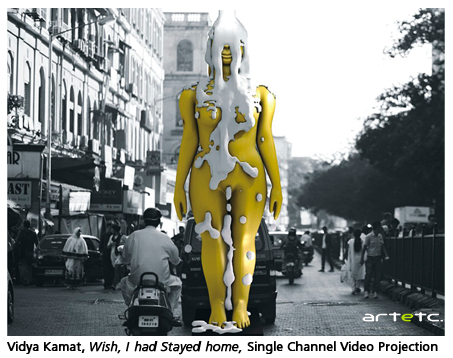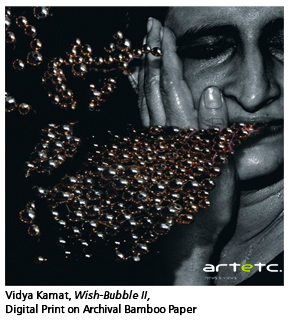- Publisher's Note
- Editorial
- The Enigma That was Souza
- Progressive Art Group Show: The Moderns
- The Souza Magic
- M.F. Husain: Other Identities
- From All, One; And From One, All
- Tyeb Mehta
- Akbar Padamsee: The Shastra of Art
- Sensuous Preoccupations of V.S. Gaitonde
- Manishi Dey: The Elusive Bohemian
- Krishen Khanna: The Fauvist Progressive
- Ram Kumar: Artistic Intensity of an Ascetic
- The Unspoken Histories and Fragment: Bal Chhabda
- P. A. G. and the Role of the Critics
- Group 1890: An Antidote for the Progressives?
- The Subversive Modernist: K.K.Hebbar
- Challenging Conventional Perceptions of African Art
- 40 Striking Indian Sculptures at Peabody Essex Museum
- Tibetan Narrative Paintings at Rubin Museum
- Two New Galleries for the Art of Asia opens at the Museum of Fine Arts in Boston
- Raphael, Botticelli and Titian at the National Gallery of Australia
- The Economics of Patronization
- And Then There Was Zhang and Qi
- What Happened and What's Forthcoming
- Random Strokes
- Yinka Shonibare: Lavishly Clothing the Somber History
- A Majestic “Africa”: El Anatsui's Wall Hangings
- The Idea of Art, Participation and Change in Pistoletto’s Work
- On Wings of Sculpted Fantasies
- The Odysseus Journey into Time in the Form of Art
- On Confirming the Aesthetic of Spectacle: Vidya Kamat at the Guild Mumbai
- Dhiraj Choudhury: Artist in Platinum Mode
- Emerging from the Womb of Consciousness
- Gary Hume - The Indifferent Owl at the White Cube, London
- Daum Nancy: A Brief History
- Experimenting with New Spatial Concepts – The Serpentine Gallery Pavilion Project
- A Rare Joie De Vivre!
- Art Events Kolkata-December 2011– January 2012
- Art Bengaluru
- Mumbai Art Sighting
- Delhi Dias
- Musings from Chennai
- Preview, February, 2012- March, 2012
- In the News-January 2012
ART news & views
On Confirming the Aesthetic of Spectacle: Vidya Kamat at the Guild Mumbai
Issue No: 25 Month: 2 Year: 2012
by Shubhalakshmi Shukla

 Much before Vidya Kamat acquired her degree in Fine Arts and her doctorate in Comparative Mythology, the seed of a radical thinking started making foundation within her. Much before she became an artist, subversive thoughts around identity gripped her and escalated her experiences of the mundane. As a child she was worshipped as goddess Kaumari till her puberty. For a girl child such loaded experiences of a deified position of a goddess must be surely a palette of mixed experiences of awe and confusion, feeling empowered and violated simultaneously. Then as slow stepping into the world of mundane she had to shed the ‘false skin’ of the deity and battle with the hardships of an ordinary girl in a ‘patriarchal’ surrounding. Often Vidya Kamat’s works address the complexities of such experiences of inculcated paradox within the myth of sanctified position of a goddess, practiced as a strict ritual within certain ethnic groups. Her photographic works accentuate human body-as-a-site of experiencing the ‘invisible’ wherein she portrays herself taking violence and sensuality, beauty and macabre on her body. This enfolds the incoherence one experiences in the world of spectacles. The photographic works titled Wish Bubble in the ongoing exhibition Wish I Had Stayed Home at The Guild Mumbai are aesthetically closer to her earlier works in Birthmark and Re write exhibits. However, the present show also includes a video work titled Wish I Had Stayed Home and a body of backlit photographic works of the present day landscapes of Mumbai. The video work extends Vidya Kamat’s enquiry on the context of woman’s body placed as an arid landscape in the centre of the pomp and pleasure of the metropolitan world of opulence. The naked body symbolically undergoing a ritualistic bath (abhishek) in an open-space (location Churchgate Station in Mumbai) suggests a lack of human touch and indifference of the surrounding world thus titled Wish I had Stayed Home. The work recalls Kamat’s observation of a displaced woman, she observed, when she had newly arrived in the city of Mumbai.
Much before Vidya Kamat acquired her degree in Fine Arts and her doctorate in Comparative Mythology, the seed of a radical thinking started making foundation within her. Much before she became an artist, subversive thoughts around identity gripped her and escalated her experiences of the mundane. As a child she was worshipped as goddess Kaumari till her puberty. For a girl child such loaded experiences of a deified position of a goddess must be surely a palette of mixed experiences of awe and confusion, feeling empowered and violated simultaneously. Then as slow stepping into the world of mundane she had to shed the ‘false skin’ of the deity and battle with the hardships of an ordinary girl in a ‘patriarchal’ surrounding. Often Vidya Kamat’s works address the complexities of such experiences of inculcated paradox within the myth of sanctified position of a goddess, practiced as a strict ritual within certain ethnic groups. Her photographic works accentuate human body-as-a-site of experiencing the ‘invisible’ wherein she portrays herself taking violence and sensuality, beauty and macabre on her body. This enfolds the incoherence one experiences in the world of spectacles. The photographic works titled Wish Bubble in the ongoing exhibition Wish I Had Stayed Home at The Guild Mumbai are aesthetically closer to her earlier works in Birthmark and Re write exhibits. However, the present show also includes a video work titled Wish I Had Stayed Home and a body of backlit photographic works of the present day landscapes of Mumbai. The video work extends Vidya Kamat’s enquiry on the context of woman’s body placed as an arid landscape in the centre of the pomp and pleasure of the metropolitan world of opulence. The naked body symbolically undergoing a ritualistic bath (abhishek) in an open-space (location Churchgate Station in Mumbai) suggests a lack of human touch and indifference of the surrounding world thus titled Wish I had Stayed Home. The work recalls Kamat’s observation of a displaced woman, she observed, when she had newly arrived in the city of Mumbai.
Vanishing Point (sarcastically suggesting a Black Hole) hosts a desire for a gorgeous sunset in the city of Mumbai, yet it imprisons the bitter truth of violation caused to Nature. The location captured in these photographs is the Northern Mumbai where the city’s waste is dumped for good. The work includes a combined aesthetic of both the experiences. Likewise, the backlit works titled Effluence captures the beauty of the natural streams in Mumbai which have turned to nullas- the dumping grounds. These works are symbolic of the ‘excess waste’ produced due to a culture of indulgent consumerism in the cotemporary times. Vidya Kamat also skillfully demonstrates the ‘excess produce’ in her installation with golden beads, titled Wish Bubble -a part of the ongoing show at The Guild Mumbai. These landscapes are carved out with the help of saturated colours and are endowed with a paradox of evoking feelings of beauty and morbidity in the city.
I would like to view Wish Bubble, as a personal soliloquy of an urban individual who is in the groove of the urban need for ‘more’ refinement. The ambitious metropolitan individual is empowered rather than obsessed with one’s growth and success. S/he sheds away the oppressive demands of the conventional living in the society and contributes her minutest thoughts and moments to create a ‘new’ language. S/he chooses to be outright, open and challenging in her performance and provokes simplicity. S/he seems to be drunk with a paradoxical wisdom to explore the world of illusions- Maya. S/he is extravagant and yet fearless. S/he is resplendent and yet calm within.
In her recent suite Vidya Kamat explores the landscape of excess and the loss of coherence. She exploits her personal experiences of self-within and of the world-outside to create an aesthetic of loss and beauty in the present day world of spectacles.